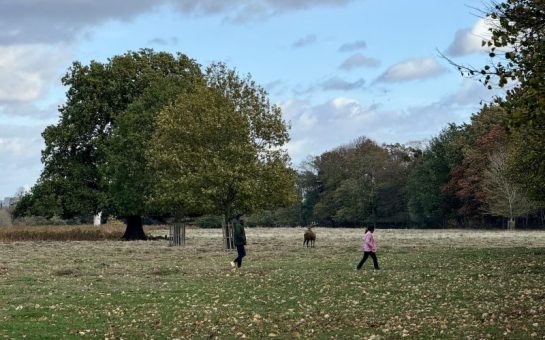Anderson Moores Vet Specialists have confirmed three UK cases of a deadly dog disease called Alabama rot so far in 2021, with one case in Chiswick.
Roehampton Veterinary Clinic announced that the infected dog had recently been walked in Chiswick Park, Sheen Woods and Richmond Park.
David Walker, a leading Alabama rot researcher, emphasised that the disease is still extremely rare, with a total of 254 cases since it first appeared in the UK in 2012.
Walker said that it tends to affect hounds and gun dogs the most, though it has been detected in a variety of breeds.
He explained that the majority of cases begin with skin lesions below the elbow or knee or between the digits, which can cause the dog to lick excessively.
Walker said: “They’re often very well-demarcated lesions, like a patch of hairless skin, sometimes spherical, sometimes very red or with the appearance of an ulcer.”
Alabama rot causes kidney failure, which typically develops just three days after skin lesions appear.
The mortality rate of the disease is 90% and the cause is still unknown.
If the dog’s kidney is affected, they are likely to go off their food, vomit and seem tired.
Walker’s advise is to contact the vet if an unexpected sore appears, as dogs have a greater chance of survival if it is identified early.
He added: “Over 92% of cases identified are between November and May. That increases our suspicion that there is some sort of environmental trigger, because if there wasn’t, then we might expect to see cases the whole year round.”
Walker suspects that in some cases the disease may only cause skin lesions and not spread to the kidney, but this is difficult to measure as a post-mortem analysis of the kidney is needed to confirm the disease, and most dogs with skin only symptoms survive.
Michael Barlow set up the Alabama Rot Research Fund after his six-year-old Labrador Lulu contracted the disease in 2015 while he was on holiday.
He said: “It was a pretty horrendous process to go through, given that the dog was completely healthy, and within three or four days of her normal walk she was fighting for her life.
“I flew back early and I was told they didn’t think she was going to make it, but if I wanted to try another possible therapy treatment then I could go to the Royal Veterinary College and do plasma exchange therapy.
“We will never know if that’s why she survived, but she did.”
The ordeal cost Barlow around £15,000, but Lulu is now 12 and healthy.
He said: “I didn’t have insurance for that kind of thing, but I wanted to save my dog because I’m very, very fond of her, she means a lot to me.”
Strangely, Lulu was taken on the same walks through the New Forest as Barlow’s friend’s dog, an 11-year-old Labrador who did not contract the disease.
Both Barlow and Walker theorised that some dogs might just have an intrinsic predisposition to Alabama rot.
A spokesperson from Young Veterinary Partnership Chiswick speculated that the disease stems from E-coli bacteria in cow dung, but Walker said the evidence suggests otherwise.
He explained: “There was a piece of epidemiological work that we published in 2018 looking at the walking patterns and habits of these dogs, and it actually suggested that dogs were less likely to contract the disease if they were walked in livestock-related fields.”
Presuming Alabama rot is caused by an environmental trigger, many dog owners have opted to wash their dogs’ muddy paws after a walk as a preventative measure.
Barlow said: “Nobody really knows whether it does any good or not, but I always wash the dog’s paws.
“Am I doing it to keep the house clean? Am I doing it because of Alabama rot? I don’t really know. But I would say to everybody: what’s the harm?”





Join the discussion
I lost my dog to Alabama rot, the silent creeping flesh eating dog killer in the woods. I dont find it rare and there is not enough research about it. It gets hushed up or/and missed by many vets. Its horrendous to witness. I have a puppy and I scared every day.